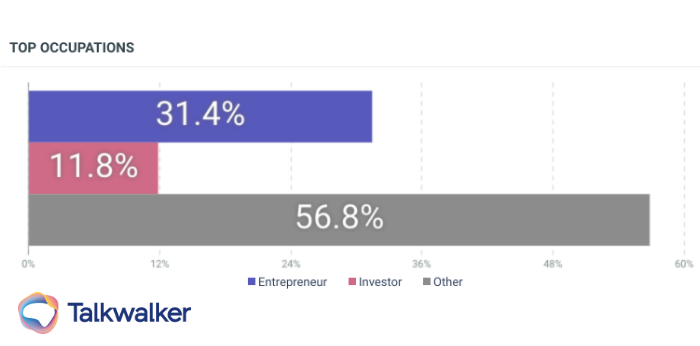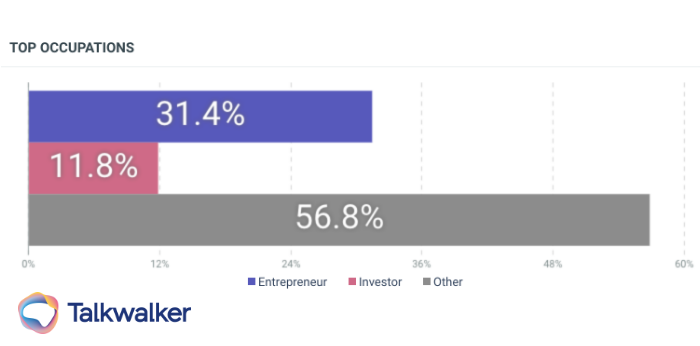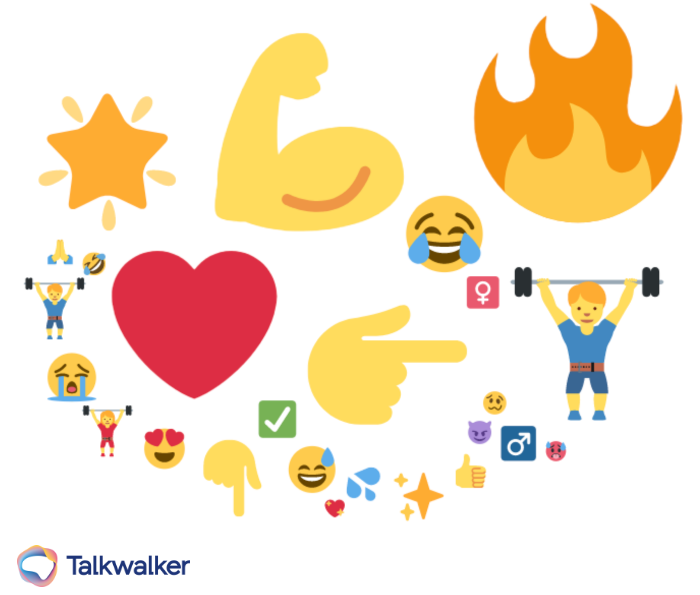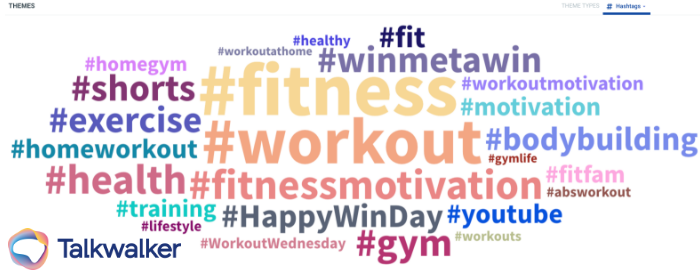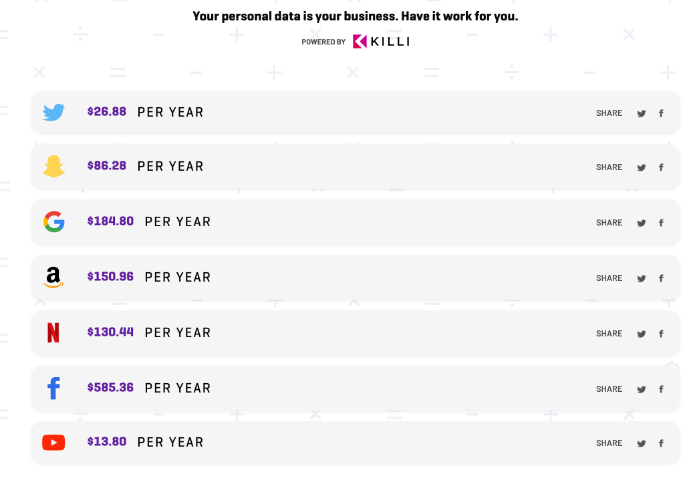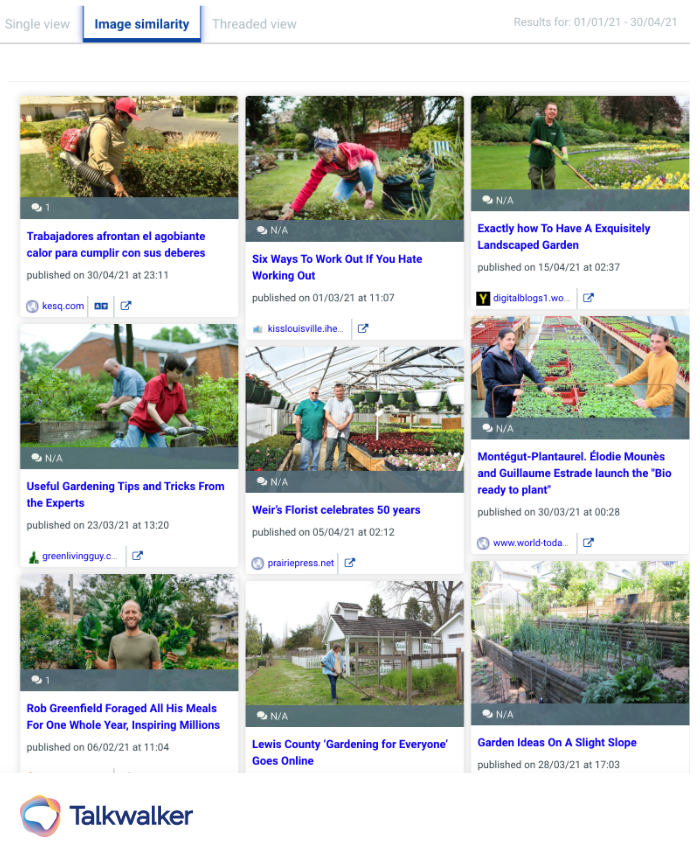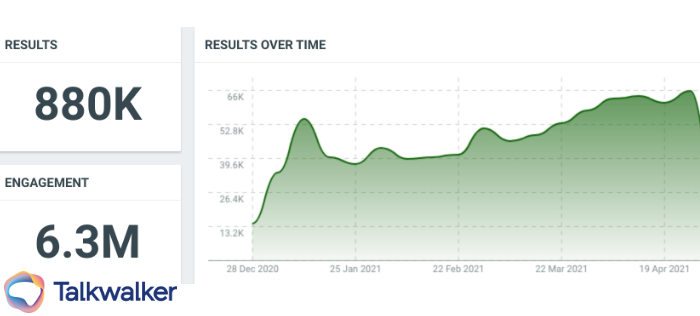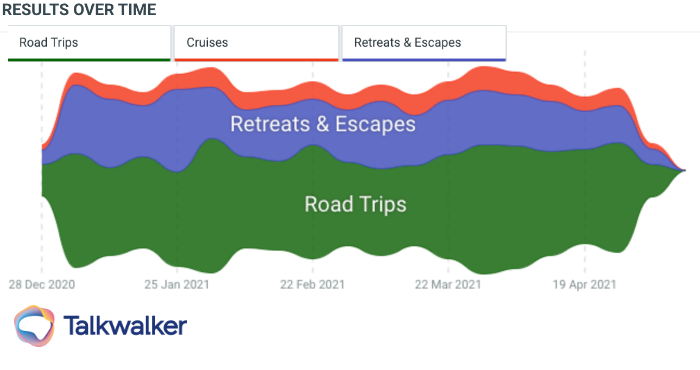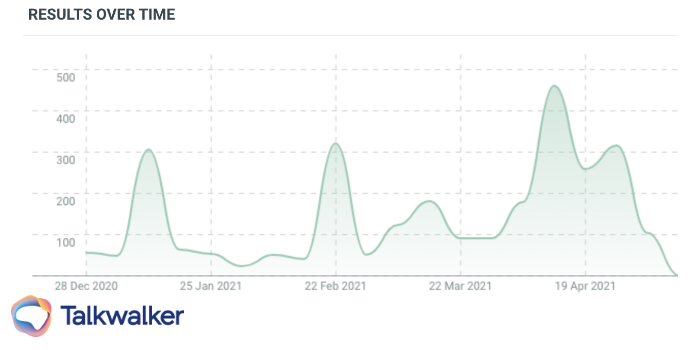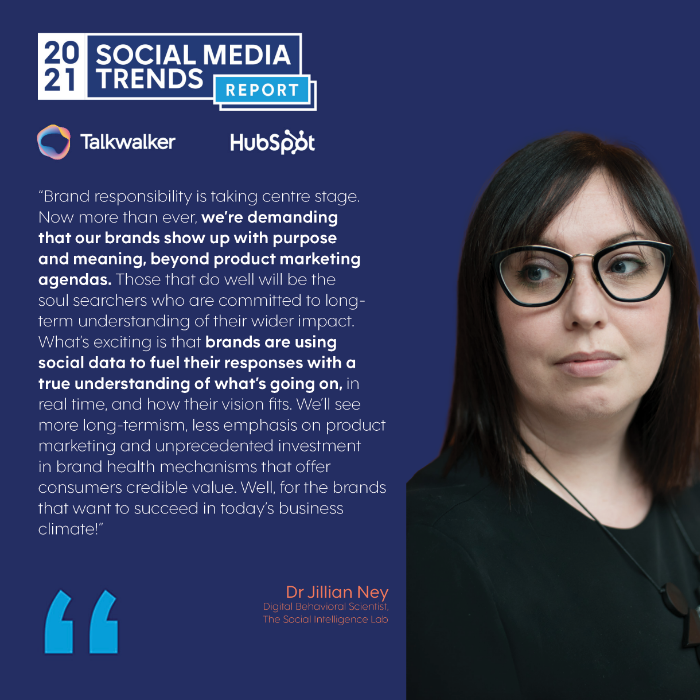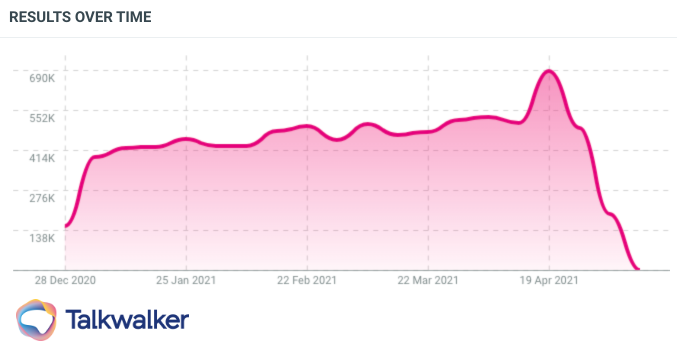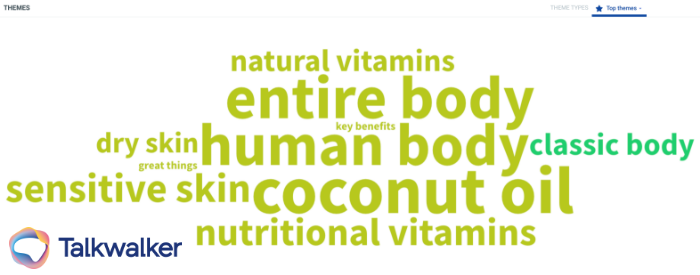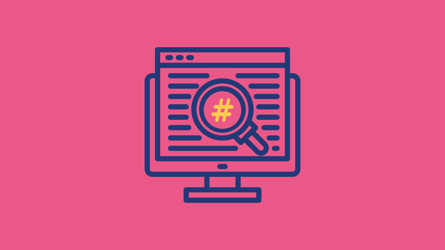Show me the consumer trends research!
Using Talkwalker’s Consumer Intelligence platform we identified several emerging trends in consumer spending and conversation.
As summer arrives, these trends will allow brands to connect on a more human level with the consumers they want to reach.
This list is categorized just like Talkwalker’s AI sees the world. It identifies objects and scenes (and logos from your brand!) within the millions of conversations taking place on the internet.
These are some of the most striking trends I noticed, split by “scenes” taking place indoors and outdoors, and objects.
Consumer trends in the USA, 2021 | Indoors
These activities, for the most part, take place indoors. Let’s dig deeper into them:
Play-to-earn games
Play-to-earn games are the newest development in the gaming and crypto worlds. Powered by the rise in popularity of NFTs, a new type of gaming persona is emerging.
For years tentpole games have been seeing a smaller share of growth, compared to microtransaction-fueled games. This new category upends the dynamic and rewards the player for their success.
Play to earn is a movement.
✊ Gamers are revolting across the world.
In retrospect, it will be inevitable. $axs $linkhttps://t.co/FDmPiG2Eg8
— Axie Infinity (@AxieInfinity) January 31, 2021
Looking at discussions of the category, we might not be so surprised that the two largest self-described occupations amongst consumers discussing play-to-earn games consider themselves entrepreneurs and investors. As their success and excitement continues, it’s not long until the masses arrive.
The play-to-earn gaming conversation is being fueled by self-described entrepreneur/investor types.
At-home fitness
Americans are spinning, rowing, and lifting at home more than ever.
The advent of streaming short classes, fitness wearables like Fitbits and Apple Watches, and thoughtfully designed equipment like Lululemon’s Mirror or the Hydrow Rower, paired with quick financing, is making it easier than ever to get the gym experience at home.
This emoji cloud of the at-home fitness conversation shows the camraderie and motivation of the home-based workout.
No one wants to go home sweaty, or use a shared shower right now. They do want to still reach their fitness goals, and an array of companies are stepping up to make that happen.
Do you even lift if you don’t hashtag your workout? At-home fitness hashtags blend motivation and utility - the perfect combination for why an at-home fitness consumer would want to follow a fitness influencer.
Teaching good form, while inspiring followers to achieve better versions of themselves, it’s a trend that became impossible to ignore this past year, and figures to only get more convenient in the year ahead.
At-home doesn't mean the workout is any easier as these hashtags prove. Consumers still need practical advice and motivation to achieve their goals.
Data monetization (for me, the shopper)
Every consumer knows, on some level, that companies are making money off their data. Now a new raft of tools allows the consumer to get a slice of that action.
Check out what my email address data is apparently worth:
What can I say? Show me a good ad and I usually bite.
This cuts back to a core principle of the digital advertising world - give value to get value. Value, like 25% off emails, is why consumers give up their personal data in the first place. Now they too can feel some profit from their buy-happy ways.
Sin products - Cannabis, sports betting, and canned cocktails
Alongside loosening cultural norms is a severe budget shortfall, and we are seeing states across the country bring hidden industries out of the shadows onto Main Street. I’m talking about cannabis and sports betting legalization of course. Avid readers also know that we covered hard seltzer last summer (we’re trendy).
What we’re seeing in advance of this summer is an evolution in the malt beverage category - from hard seltzer to...extra hard seltzer. To canned cocktails becoming ubiquitous, and new forms to consume these products like slushies or popsicles reaching a critical cultural mass, it’s shaping up to be a sloppy summer.
Learn more about your audience
Consumer trends in the US, 2021 | Outdoors
These trends either take place outdoors, or their impact is mostly felt outside of the home.
Gardening
Last spring people gazed out their windows at their yard and thought, instead of going to the grocery store, I can eat from here. This season, they’re going to get it right.
The gardening craze has hit full force, with celebrities like Drew Barrymore launching their own gardening brands, this new out-of-home space is ripe for influencers to grow passionate fans.
A fertile patch of internet-land with lots of accessories? Influencer heaven.
Look for growth amongst gardening products, whether it’s trowels and spades or seeds and hoses.
But also look for an explosion of content growth in this space. If the mentions and engagement this year are anything to go by, this patch of garden is poised for abundant growth.
Gardening conversations are heating up. What about a gardening blog for growth marketers? Leave your best title in the comments.
Mindful Travel
Americans are ready to travel again, and this summer they will travel frequently.
Taking a look at conversations around “a road trip” or “a cruise” or “a retreat or escape” I found that discussions around retreats and escapes outpace the cruise industry.
Road trips are also on the forefront of American minds, with fewer global destinations available to fly to, those who feel they missed The Great American Traffic Jam at our National Parks last summer have another opportunity now.
The trend for many Americans this summer will be to hop in the car and go camping, hiking, and just escape.
Whether it’s yoga or meditation, a hike in the woods or a quick escape to the beach to unplug, Americans are ready to disconnect, reset, and take pause after a long and painful year.
Trending poorly? Learn what your audience demands
Revenge spending
Who cares what it costs? As painful and stark as the economic losses have been for some this past year, others have been cooped up at home working hard with little beyond a wine collection to spend money on. I count myself amongst that second, oddly specific group.
Nevertheless, the revenge of the American shopper is almost upon us.
Conversations around revenge spending will really pick up as people venture outdoors more frequently this summer.
What were once considered frivolous luxuries are now seen in the eyes of many shoppers as safety measures, or more likely, worthwhile conveniences.
Let me give an example from my own life: I went to a baseball game for the first time in over a year, and I drove! I paid too much for parking and hotdogs but it was negligible in my mind. I paid over 10x what taking the subway would have cost me. Sequestered alone in my car, I thought the price was well worth it.
Now imagine 250 million consumers having the same thought in their heads. They will be getting off the couch and dusting off the credit card.
The revenge of the American shopper is nigh.
Brand Activism
This is a trend that’s happening in response to another trend we highlighted at the end of last year: the rise of the socially conscious audience. Brands have fully realized their role in societal conversations, and are now acting as lobbyists, influencers and policy-makers around a range of issues. This is done for two self-serving reasons, and one genuine one.
One is trying to influence policy around issues that directly affect the brand like Columbia Sportswear’s take on environmental issues. Another reason brands are doing this is to show audiences that the brand mimics their values. This happens when a brand takes a stance on an issue that’s been in the news recently.
Dr. Jillian Ney shares why brands need to be socially conscious in order to connect with their audiences.
The genuine reason brands are increasing their activism is that they truly want to connect with their audiences, and not necessarily based on a profit-motive.
That comes down to knowing your audience, and giving them what they want.
Active outdoors (the year of the kayak/mountain bike)
Even though vaccinations are on the rise, and life may start to resemble normal somewhat this summer, expect some of the gains experienced in the outdoors industry to stick around.
Last summer bike shops, kayak rentals, stand-up paddleboards, tubing and more activities like that all saw a surge that supply chains couldn’t keep up with.
This year, they’re anticipating the deluge. The outdoors still offers an attractive mix of fresh air, social distancing, exercise and beauty that the American consumer will find hard to resist. Supplied with the latest gear and equipment, expect last year’s tent-pole year for the industry to really be the first stake in the ground.
Consumer trends in the United States, 2021 | Objects
Show me the consumer trends research!
One other piece Talkwalker’s AI-vision software can identify is objects. So here you have some of the objects on which the biggest consumer trends will be built in 2021 in the United States.
Bikes
It’s great exercise, it’s an efficient way to move, and we’re doing it both indoors and out: Bikes are a burgeoning consumer trend in the US this year.
Mentions of bikes are in an uphill climb. Gear and accessories for the avid cyclist will be very popular for this consumer trend.
Some consumers use a bicycle as an environmental statement, others prefer to add an electric battery for an easier push, but make no mistake: this year in America a lot of bikes will be sold. A lot of miles will be pedaled.
Bike accessories will be Googled, and brands will be there to make it all easier, more trackable, more rewarding, and more shareable.
Kayaks
If you thought there was a bike shortage last summer, you should have tried buying a kayak. Talk about a small craft advisory.
While it was next to impossible in some places (I tried, and failed, to purchase a kayak to paddle downstream at the local crick) in summer 2020, the outdoor sports industry doesn’t want to show up empty handed again.
Kayaks, and other individual or tandem lightweight watercraft are going to see a ton of new participants, buyers, and social conversations related to these hobbies.
Being out on the water’s fun! Recreating the experience with a lamp and a fan from your couch is not.
Clothes and apparel
Everyone who spent the time and money on their at-home fitness routine has a buff new bod they need to show off.
For the rest of us it’s time to switch out those sweatpants for slacks, it’s suits not shorts season. For many our old versions of those office staples don’t fit anymore.
Apparel spending is ready to come back, as we all make our triumphant return to society. Retailers have supply in abundance as foot-traffic in stores makes its return too.
Give your audience what they want
Makeup and cosmetics
Cosmetics is an industry that’s well accustomed to change, and the space has executed its pandemic pivot with grace.
Skincare is now a leading focus for many consumers, who aren’t wearing as much makeup. Their time, money, and effort is now spent on achieving a K-beauty skincare aesthetic.
Some cosmetics trends like creating an ever wider variety of shades and palettes remain important long-term, and can help brands remain connected to socially conscious audiences.
As summer heats up we also expect to see the skincare trend apply liberally outdoors in the form of sunscreen. Plain, organic, cruelty-free sunscreen that can double as a benefit for a skincare routine will be the statement trend of an already hot summer.
Ingredients and benefits are two of the key pieces of the organic sunscreen conversation, colored by sentiment above.
Like last year’s sourdough starters, this is a trend that beauty fans can make at home, though expect brands to make it easy to purchase their own version of these more natural sun creams as well.
Consumer electronics
The last object on our list of consumer trends in the US this year is consumer electronics.
There’s a variety of different electronics that will be major acquisitions for Americans this year, each with a use that we haven’t seen in over a year. Consider:
-
A new TV to watch a sports-filled summer, like MLB, the Olympics, NBA, or the European Championships.
-
A new pair of headphones to be used for commuting, instead of Zoom meetings.
-
A fitness wearable to track our new health goals.
-
New video game consoles recently launched, and are more widely available..
Consumer electronics is one of the categories that will benefit most from some of the other trends we’ve noted here like revenge spending, fitness trends, or sports betting legalization.
Why consumer trends in the USA matter in 2021?
This list is just a short summary of some of the biggest trends. Within separate industries we’ll see even more specific trends, but a lot of the trends above will be felt in one way or another.
As you consider these trends, ask yourself how can your brand:
- Deliver value to people who find these trends important?
- Capitalize on the current trend?
- Capitalize on the next trend?
- Create a brand trend all your own?
For some brands and for some trends, it's enough to be in the right place at the right time. You can catch the wave and enjoy the ride just by your brand being itself!
For everyone else, trends research and cross-applicability are of the utmost importance. Data and research will help spark your brand's next best idea.

